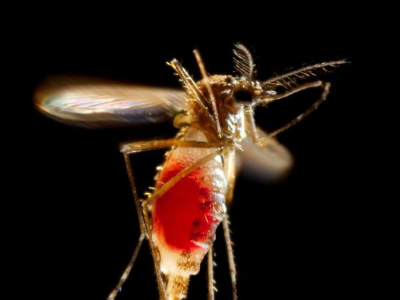May 12, 2005 (CIDRAP News) – State health departments have improved their terrorism preparedness capabilities since 2001, but some of the improvement might have come at the expense of other public health programs, says a report released today.
A survey conducted in 2004 by the Council of State and Territorial Epidemiologists (CSTE) shows that states have increased their overall number of epidemiologists by 27% and boosted the percentage of epidemiologists working on terrorism preparedness and emergency response since the federal government vastly increased spending in those areas after 2001.
But the epidemiology workforce has declined in six other areas, including infectious disease, chronic disease, environmental health, injury, occupational health, and oral health, according to the CSTE survey. The Centers for Disease Control and Prevention (CDC) published two articles on the survey today in Morbidity and Mortality Weekly Report.
"The findings in this report suggest that the efforts of states to meet federal terrorism preparedness program requirements have redirected state resources from other program areas," the CDC says in one article.
The CSTE previously polled state health departments on their epidemiologic capacity in November 2001. That was before an influx of about $1 billion in federal funds for terrorism preparedness and emergency response in fiscal year 2002, provided in response to the terrorism attacks of 2001.
The CSTE conducted the latest survey by making it available online to health departments in all 50 US states, eight territories, and Washington, DC, in the summer of 2004. The response rate was 91.5%, with all the recipients except five territorial health departments participating.
The results showed a total of 2,580 epidemiologists working in all the health departments, an increase of 343, or 26.9%, from the 2001 number. (The survey response rate was lower in 2001, so the comparison was based on only those health departments that responded to both surveys.)
However, respondents reported increased capacity only in the areas of (1) terrorism preparedness and emergency response and (2) maternal and child health. Capacity was down in the six other areas listed above.
The proportion of all epidemiologists assigned to terrorism preparedness programs increased from 9% (123 of 1,366) in 2001 to 16.4% (424 of 2,580) in 2004, the CDC reports.
Further, the number of states and territories reporting "full/almost full" or "substantial" epidemiologic capacity for terrorism and emergencies increased from 19 in 2001 to 43 in 2004. Eight health departments reported partial capacity for these areas in 2004, and three reported little or no capacity.
"Despite the increase in epidemiologists, state public health officials estimate that 192 additional epidemiologists, an increase of 45.3%, are needed nationwide to fully staff terrorism preparedness programs," the CDC says.
Overall, the survey showed that to fully address public health services dependent on epidemiology would require a 47% increase in the total number of epidemiologists—from 2,580 to 3,790. That includes 325 more epidemiologists in the infectious disease area, a 35% addition to the existing corps of 926.
The CSTE also assessed the training and credentials of epidemiologists. Of 1,897 who responded, 51.9% had a degree in epidemiology and 19.4% had other formal training or coursework in the discipline, while 28.5% had no formal training or coursework.
The figures were somewhat better for epidemiologists working in terrorism preparedness: 64% had a degree in epidemiology and 16% had other formal training or study, while 20% had none. The reports say the CDC and CSTE are working on "defining core competencies for epidemiologists, which should facilitate staffing and development of training."
The survey also showed that federal terrorism preparedness funds paid the salaries of 460 epidemiologists as of September 2004. Fifty-three percent of those worked in terrorism preparedness, while 33% worked in infectious disease, 5% in environmental health, and 9% in other areas.
Limitations on the survey findings included the difference in response rates in 2001 and 2004, which limit comparability of results, and probable differences in respondents' methods for estimating how many epidemiologists their departments need to handle essential services.
CDC. Assessment of epidemiologic capacity in state and territorial health departments—United States, 2004. MMWR 2005 May 13;54(18):457-59 [Full text]
CDC. Brief report: Terrorism and emergency preparedness in state and territorial public health departments—United States, 2004. MMWR 2005 May 13;54(18):459-60 [Full text]
See also:
Full CSTE report
http://stacks.cdc.gov/view/cdc/6693/


















